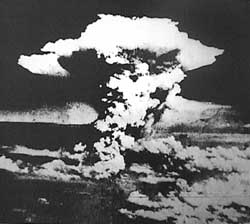Many people were horrified by the scandal surrounding cattle that were so weak that they were either being prodded with a forklift or actually carried to the kill room with the fork lift. Most people, not being involved in agriculture, wondered how anyone could be so callous. BUT the most disgusting thing you run into when you look into the issue of Factory Farming Cattle (and there are a lot of nasty things here) is that the corn that is feed to the cattle after they are weaned is killing them. So to slaughterhouse staff and meat packers its a matter timing whether they get them in the kill room before they die.
http://richard-goodman.blogspot.com/2008/02/meatpacker-in-cow-abuse-scandal-may.html
Meatpacker in Cow-Abuse Scandal May Shut as Congress Turns Up Heat
By DAVID KESMODEL and JANE ZHANG
Write to David Kesmodel at david.kesmodel @ wsj.com
and Jane Zhang at Jane.Zhang @ wsj.com
February 25, 2008;
CHINO, Calif. — Last year, a man carrying a hidden video camera took a $12-an-hour job at a little-known beef slaughterhouse here. Now the meatpacker is about to collapse, and has become a flashpoint in a national debate over meat safety and the quality of food Americans serve their schoolchildren.
Hallmark/Westland Meat Packing Co., one of the biggest suppliers of beef to the national school-lunch program before videos showing animal cruelty at the plant helped trigger the biggest meat recall in U.S. history, probably will shut down permanently, according to the company’s general manager, Anthony Magidow.
:}
As John Robbins points out modern cattle raising is all about carving up cattle quick:
What About Grass-fed Beef?
Feeding grain to cattle has got to be one of the dumbest ideas in the history of western civilization.
Cows, sheep, and other grazing animals are endowed with the ability to convert grasses, which those of us who possess only one stomach cannot digest, into food that we can digest. They can do this because they are ruminants, which is to say that they possess a rumen, a 45 or so gallon (in the case of cows) fermentation tank in which resident bacteria convert cellulose into protein and fats.
Traditionally, all beef was grass-fed beef, but in the United States today what is commercially available is almost all feedlot beef. The reason? It’s faster, and so more profitable. Seventy-five years ago, steers were 4 or 5 years old at slaughter. Today, they are 14 or 16 months. You can’t take a beef calf from a birth weight of 80 pounds to 1,200 pounds in a little more than a year on grass. It takes enormous quantities of corn, protein supplements, antibiotics and other drugs, including growth hormones.
Switching a cow from grass to grain is so disturbing to the animal’s digestive system that it can kill the animal if not done gradually and if the animal is not continually fed antibiotics. These animals are designed to forage, but we make them eat grain, primarily corn, in order to make them as fat as possible as fast as possible.
All this is not only unnatural and dangerous for the cows. It also has profound consequences for us. Feedlot beef as we know it today would be impossible if it weren’t for the routine and continual feeding of antibiotics to these animals. This leads directly and inexorably to the development of antibiotic-resistant bacteria. These are the new “superbugs” that are increasingly rendering our “miracle drugs” ineffective.
:}
Letting Corporations into anything in agriculture besides processing is turning out to be a disaster in many respects from beginning to end. To this end we could talk about any plant or animal that we eat, but if we keep our focus on corn it becomes clear that all the corporate ag production affairs require one thing energy and lots of it.
While the movie, King Corn, has a lot going for it, like cute college kids out for a lark and the absurdity of growing an acre of anything in the current farm system, it is actually a pretty good look at why growing as much corn as we do is stupid and corporate farming only compounds that.
:}
http://www.pbs.org/independentlens/kingcorn/
While the planting, growing and harvesting of field corn takes an incredible amount of energy, the real energy comes after it has been harvested. You can’t eat the stuff so it all has to be PROCESSED to be used or eaten by animals most of which don’t like the stuff but eat it if they are forced to. As the film makers themselves say:
Almost everything Americans eat contains corn: high fructose corn syrup, corn-fed meat, and corn-based processed foods are the staples of the modern diet. Ready for an adventure and alarmed by signs of their generation’s bulging waistlines, college friends Ian Cheney and Curt Ellis know where to go to investigate. Eighty years ago, Ian and Curt’s great-grandfathers lived just a few miles apart, in the same rural county in northern Iowa. Now their great-grandsons are returning with a mission: they will plant an acre of corn, follow their harvest into the world, and attempt to understand what they—and all of us—are really made of.
But where will all that corn go? Ian and Curt leave Iowa to find out, first considering their crop’s future as feed. In Colorado, rancher Sue Jarrett says her cattle should be eating grass. But with a surplus of corn, it costs less to raise cattle in confinement than to let them roam free: “The mass production of corn drives the mass production of protein in confinement.” Animal nutritionists confirm that corn makes cows sick and beef fatty, but it also lets consumers eat a $1 hamburger. Feedlot owner Bob Bledsoe defends America’s cheap food, but as Ian and Curt see in Colorado, the world behind it can be stomach turning. At one feedlot, 100,000 cows stand shoulder-to-shoulder, doing their part to transform Iowa corn into millions of pounds of fat-streaked beef.
Following the trail of high fructose corn syrup, Ian and Curt hop attempt to make a home-cooked batch of the sweetener in their kitchen. But their investigation of America’s most ubiquitous ingredient turns serious when they follow soda to its consumption in Brooklyn. Here, Type II diabetes is ravaging the community, and America’s addiction to corny sweets is to blame.
The breadth of the problem is now clear: the American food system is built on the abundance of corn, an abundance perpetuated by a subsidy system that pays farmers to maximize production. In a nursing home in the Indiana suburbs, Ian and Curt come face-to-face with Earl Butz, the Nixon-era Agriculture Secretary who invented subsidies. The elderly Butz champions the modern food system as an “Age of plenty” Ian and Curt’s great-grandfathers only dreamed of.
.
November pulls Ian and Curt back to Iowa. Their 10,000-pound harvest seems as grotesque as it is abundant. They haul their corn to the elevator and look on as it makes its way into a food system they have grown disgusted by. At a somber farm auction, Ian and Curt decide to tell their landlord they want to buy the acre. The next spring their cornfield has been pulled from production and planted in a prairie, a wild square surrounded by a sea of head-high corn.
:}
OKOKOKOKOK So maybe corn IS killing us but will we miss it when its gone because of energy prices. Probably not one bit though the first winter maybe tough if gasoline goes to $100 a gallon. The first to go though will be the exporting of grain. Do you believe we actually pile billions of tons of corn on diesal power ships so that other people can refine (errr spend their energy on) it? They can’t eat it either.
For more:
Iowa Corn
Get info on biotechnology, corn products and Iowa corn growers.
Corn Palace Convention and Visitors Bureau
As seen in KING CORN, Mitchell, South Dakota’s Corn Palace is a monument to the country’s leading crop.
American Corn Growers Association
“America’s leading progressive commodity association, representing the interests of corn producers in 35 states.”
A Zillion Uses for Corn!
An extensive list of products that contain corn.
Putting DNA to Work: Improving Crops: From Teosinte to Corn
See photos of corn’s ancestor and read about how its genetic makeup has evolved.
EWG: Farm Subsidy Database
View graphs and databases on corn subsidies in the United States.
Mountains of Corn and a Sea of Farm Subsidies
Reprinted from a 2005 New York Times article, this piece examines how the country’s corn overproduction is affecting its farmers.
No-Till Farmer
Top tips on growing monoculture corn.
Corn Refiners Association
Learn about corn refining and resulting products.
High Fructose Corn Syrup
HFCS, how it’s made and how it affects your health, plus other links.
:}










